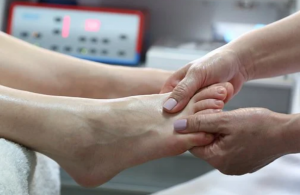Podiatry is a branch of medicine focused on the foot and ankle. This specialty is a good option if you are interested in treating foot and ankle disorders. This field offers a high-paying career with many opportunities to advance your skills and expertise. Learn more about the requirements to become a doctor of podiatric medicine. Also, find out what you need to earn as a podiatrist. Also, get the latest job outlook in this field.
 Become a podiatrist
Become a podiatrist
There are many reasons to consider a career in podiatric medicine. If you enjoy taking care of people and are interested in health care, becoming a podiatrist may be the right path. Regardless of your interest, you’ll need to study and take the necessary exams to become a licensed podiatrist. Listed below are some tips to make the process easier.
Licensed to practice podiatry SA is a requirement in most states. To become licensed, you must complete medical school and pass the American Podiatric Medical Licensing Examination. Additionally, you’ll need to complete continuing education courses every year to keep up with changes in the field. You can even take online courses to further your education. Depending on where you live, you can also opt for a residency program that combines coursework and clinical work.
Requirements to become a doctor of podiatric medicine.
To be eligible for podiatric medical program admission, an applicant must meet several prerequisite course requirements. The podiatry SA coursework must ensure proficiency in modern concepts and skills. A baccalaureate degree from an accredited college is the best pre-professional preparation. A minor in a medical field, such as human anatomy, physiology, or zoology, is not required. However, upper-level sciences are highly recommended to prepare for the pre-clinical curriculum.
The educational requirements for becoming a podiatrist are demanding, requiring seven to eight years of postgraduate study. After graduating from a four-year undergraduate program, candidates will apply to one of nine colleges of podiatric medicine in the U.S., including Barry University School of Podiatric Medicine in Miami Shores, Florida. To earn the degree, candidates must complete a four-year program at an accredited college.
Earnings of a podiatrist
The annual income of a Podiatrist varies according to the specialisation. While the average annual salary for a podiatrist is $74,500, the pay ranges from $24,000 to $178,000, depending on the location, employer, and other factors. For example, podiatrists earn more if they specialise in orthopedics, a growing field.
As the Baby Boomer population ages, the demand for highly-specialised healthcare such as podiatry will increase. These doctors work with the body’s most complex skeletal system. Although podiatrists may not be the highest-paid medical specialists, their incomes are still impressive. If you plan on becoming a podiatrist, remember that this career path may require you to go into debt. Fortunately, becoming a podiatrist with a decent salary and excellent job prospects may be worth it.
You may have to take on substantial student loans as a new grad. The average podiatrist leaves school with an average debt of $300,000. That means balancing this debt with other living expenses is an impossible challenge. And, with limited loan forgiveness options, you might have to work for several years before the loan is forgiven. Fortunately, you can earn enough to get out of debt in a decade if you choose to work for practice.
The career outlook for podiatrists
According to a study, thirty million children play youth sports, many of which are repetitive and hypercompetitive. These youth sports are expected to increase the demand for podiatrists. Therefore, career prospects for podiatrists are excellent, and they can enjoy flexible hours and good financial rewards. Obtaining a degree in podiatric medicine is the first step in a career in this field. However, several requirements must be met before a podiatrist can start practising.
Many private health insurance plans include podiatric services. Find out if your plan covers podiatry. You may already be covered for prescription orthotics if you have health insurance. These are custom-made shoe inserts to correct an abnormal walking pattern and help restore the foot’s balance and function. Orthotics can also help improve comfort and prevent calluses and corns. In addition, it enables you to enjoy your favourite activities without worrying about your feet.